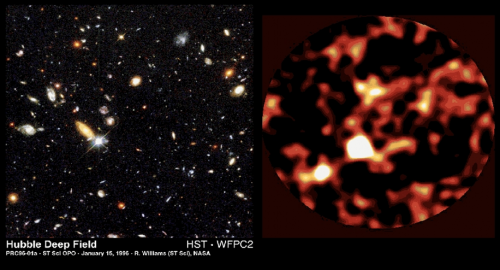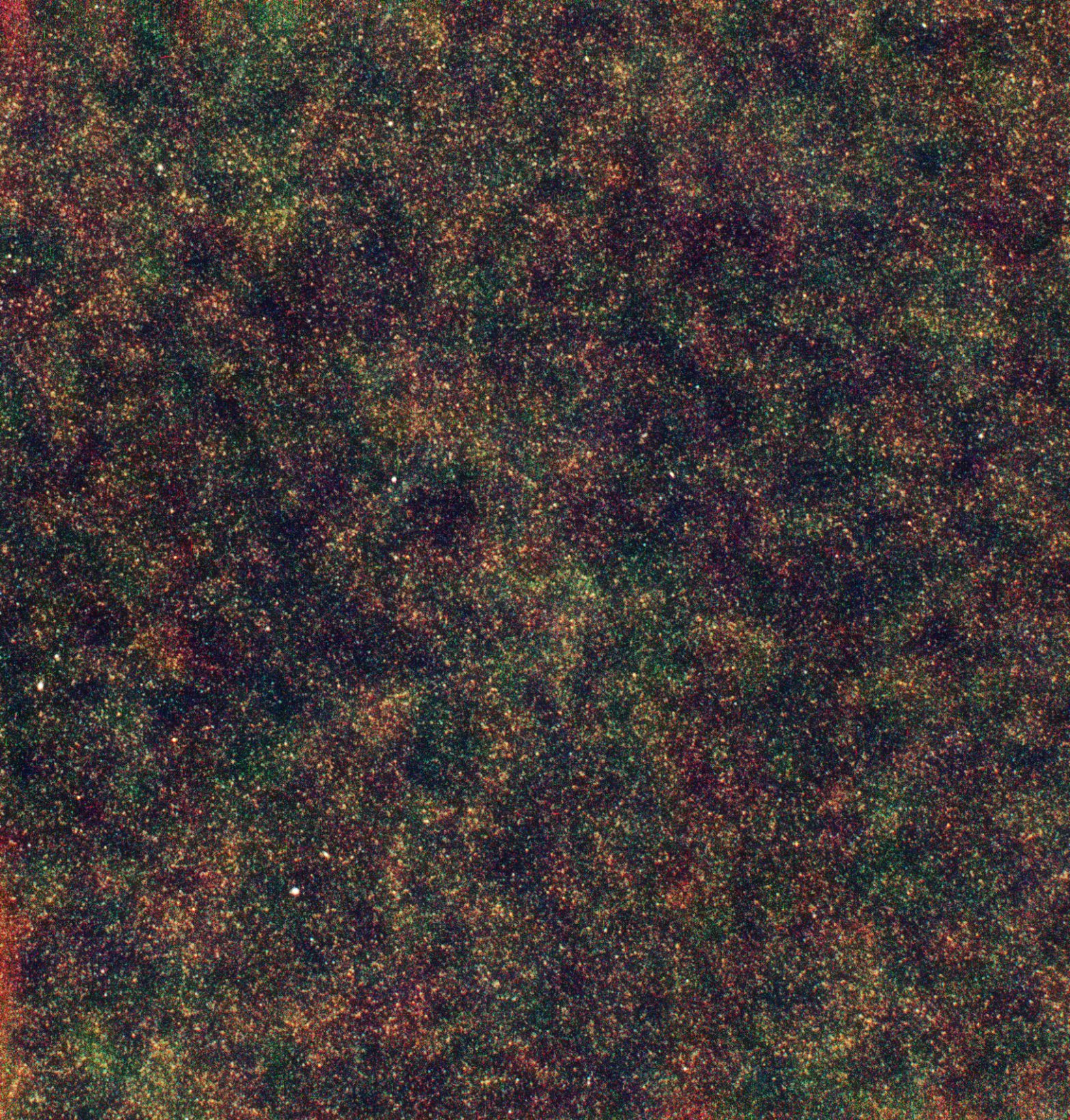One of the biggest questions in astronomy is how galaxies were formed and how they have changed over time. The pictures below show examples of three of the main galaxy classes: spirals, ellipticals and irregulars. These galaxies are very different in appearance and their contents. The ellipticals contain mostly very old stars, which must have been formed billions of years in the past, and there is very little gas and dust. The spirals and irregulars, in contrast, contain lots of gas and dust, and in these galaxies stars are being born today. These differences suggest that these galaxies might have been formed in different ways. If we could look back in time we could see what actually happened.

We can actually do this because the speed of light, though very large, is finite, which means that looking out into space is the same as looking back in time. We see the Sun as it was eight minutes ago because it takes that long for its light reach the Earth; and when we observe a galaxy at a distance of one billion light years, we see it as it looked one billion years age. This cosmic time machine gives the astronomer a huge advantage over archaeologists, in that they can see history rather than have to piece it together from its debris. By observing ellipticals, for example, at different distances, astronomers can find out how such galaxies have changed through time. Since ellipticals today contain mostly old stars, we would expect that when we are approaching the time at which these galaxies were formed, we should see much higher rates of star formation.
There are a lot of practical difficulties in observing galaxies. One of the biggest difficulties is the dust that hides the optical light and makes it hard to estimate the rate at which stars are forming in a galaxy with optical telescopes like Hubble. The way to overcome this problem is to observe the infrared emission from the dust. Previous telescopes have already shown that there are many galaxies a long way away (and thus a long time ago) than can’t be detected at all with traditional optical telescopes (see pictures at bottom). The main advantage of Herschel is that it is much more sensitive and detects hundreds of thousands of distant galaxies rather than a few hundred. Several Herschel key projects aim to understand the formation and evolution of galaxies.

The Herschel Multi-Tiered Extragalactic Survey (HERMES for short) and the PACS Evolutionary Probe (PEP) are a set of sensitive surveys of different wavelengths aimed at finding galaxies of all types over the last ten billion years of the Universe’s history. By following different classes of galaxy through time, the project teams will be able to uncover the history of the different galaxy classes. The Herschel-ATLAS will not make such deep images of the sky but will as HERMES and PEP but will cover a vey large area of sky – one eightieth of the entire sky, four times larger than all the other Herschel surveys combined. ATLAS will make it possible to study the last few billion years in the history of galaxies in great detail. The advantage of this is that four billion years ago is long enough ago to be interesting but still close enough that we can use optical telescopes to study the environments and other properties of the galaxies. There is also the possibility, with such a large survey in an unexplored waveband, of finding new types of object.
You can find more information about the HERMES, ATLAS and PEP projects on their own dedicated websites. More cosmology projects are listed on our Key Projects page.

